Please note: In October 2020, we updated the DXOMARK Camera test protocol. Version 4 now includes image preview tests and a wide range of new test scenes as part of our new trustability evaluation, which measures the camera’s ability to deliver consistent still image and video quality across all shooting scenarios. We have retested this device using the new version 4 of the test protocol and produced this completely updated review. For more information, please see our article about preview, trustability and other version 4 updates of the DXOMARK Camera test protocol.
At launch, the Oppo Reno 10x Zoom was a high-end device featuring a triple-camera setup and one of the first smartphones to feature a periscope-design 5x optical lens. With a spec sheet worthy of a 2019 flagship, the handset featured a large 6.6-inch FHD+ AMOLED display and a Qualcomm Snapdragon 855 chipset to power its Android 9 operating system. The primary camera uses a 48 MP Quad-Bayer sensor in combination with a fast f/1.7-aperture lens, and there’s a 16 mm-equivalent ultra-wide camera on board as well as the dedicated zoom camera. In video mode, the Oppo is capable of recording 4K resolution video at up to 60 frames per second.
Read on to find out how the Oppo Reno 10x Zoom performed under the brand-new version 4 of the DXOMARK Camera test protocol.
Update summary

Oppo Reno 10x Zoom


With a DXOMARK Camera overall score of 115, the Oppo Reno 10x Zoom is quite far from the top in our smartphone camera ranking but still offers decent still image and video quality in many situations. In the Photo category, it earns itself 118 points, in part thanks to accurate target exposures in most tested lighting conditions using the main camera. Dynamic range is limited compared to the best-performing devices for exposure, however, with some highlight clipping and loss of detail in the shadows when capturing high-contrast scenes.
White balance is generally neutral under a range of challenging light sources, but overall still image color rendering is a weakness, with generally disappointing saturation and occasionally unnatural skin tone rendering. Detail is acceptable in outdoor conditions, but not on par with the best devices, and the texture-versus-noise balance could be managed better, with luminance noise evident in all images. Flash performance is good, but some strong focusing errors in very low light make it challenging to capture sharp images at night, and ringing and ghosting artifacts are occasionally visible, too.
As you’d expect for a device with zoom in the name, the Reno 10x Zoom boasts a good tele-camera; nevertheless, the Oppo still only achieves a middling Zoom score of 77, mainly due to sub-par results for the ultra-wide lens. Tele-zoom performance is best at close and medium range, where details are fairly well preserved, but again, it’s not as good as the top-performing devices for zoom in our database, such as the Xiaomi Mi 10 Ultra. Long-range zoom is a little disappointing, too, with a noticeable lack of detail, as well as some ringing and unnatural texture rendering artifacts often visible. The ultra-wide camera offers decent detail in the center of the frame, but has a noticeable loss of resolution in the outer field; and high levels of noise undermine the capacity of the Reno 10x Zoom to deliver top-class ultra-wide shots.
The Oppo is capable in video mode and achieves a Video score of 99. Recording moving images, video exposure is something of a weakness, with our testers observing low exposure on faces observed in all lighting conditions, as well as exposure instabilities in outdoor scenes. The level of detail is quite high and noise is well controlled in outdoor videos, but like with stills, significant luminance noise is evident in both indoor and low-light videos. Autofocus reaction times are fast, but again, focusing errors dog the device under indoor and low-light conditions, making successful night videos a challenge. Video stabilization leaves some room for improvement, too, with a jello effect visible in many cases, as well as residual motion in videos captured while walking or running.
Preview
With very good similarity between the preview feed and final capture, the Reno 10x Zoom is one of our top performers for this attribute. Live HDR processing ensures that the display is able to accurately represent exposure in high-contrast scenes, with well-controlled highlights and shadows. HDR processing is a little low in both preview and capture, but at least you know that what you see is what you get when composing an image. In very low light, bigger differences in color and exposure are evident, and occasionally faces are slightly underexposed in HDR scenes, but these small exceptions aside, the Reno 10x Zoom offers excellent preview image quality.
The Reno 10x Zoom is slightly less successful in portrait mode, however, where differences in depth estimation and blur intensity are often evident. The bokeh effect is activated in preview when requested, but depth estimation errors show obvious subject segmentation problems and significant edge artifacts around the portrait. The final capture is much more successful for depth estimation, but resulting images also show a greater blur intensity compared to the preview image.
You can pinch-zoom from ultra-wide all the way to 60x magnification on the Reno 10x Zoom, which is handy. Reaction times are slow, however, where a delay of around 2 seconds occurs between requesting zoom and the field of view starting to change. Field-of-view changes remain relatively stable as the device switches between cameras during pinch zoom, which is good, but slight exposure instabilities were visible in all tested lighting conditions. Using the on-screen zoom buttons, you can also “step zoom” between ultra-wide, 1x, 2x, 6x, and 10x magnification, and again, performance is generally pretty good. Slight jumps in field of view and focus instabilities are evident as the selected camera snaps the image sharp, but the delay is short and we considered it acceptable.
Oppo Reno 10x Zoom Camera review (Originally published 6th December 2019)
Chinese manufacturer Oppo has been known for launching smartphones with innovative camera technologies in the past, and its latest flagship, the Oppo Reno 10x Zoom, definitely follows in this tradition. With its periscope-design 5x optical tele-lens, the Reno 10x Zoom is currently one of only two smartphones to offer such a long focal length (the other one being the Huawei P30 Pro). The tele is the Reno’s standout feature, but the rest of the specs are fully worthy of a 2019 high-end smartphone, too. The primary camera uses a 48MP Quad-Bayer sensor in combination with a fast f/1.7-aperture lens, and a 16mm-equivalent ultra-wide camera is on board as well. In video mode, the Oppo is capable of recording 4K-resolution video at up to 60 frames per second.
Users can frame and review photos and video clips on a 6.6-inch FHD+ AMOLED display; selfie shooters can make use of a motorized pop-up front camera; and Qualcomm’s top-end Snapdragon 855 chipset powers the Android 9 operating system.
Key camera specifications:
- Triple-camera setup
- Primary: 48MP 1/2″ sensor with 26mm-equivalent f/1.7-aperture lens, PDAF, Laser AF, OIS
- Ultra-wide: 8MP sensor with 16mm-equivalent f/2.2-aperture lens
- Tele: 13MP sensor with 130mm-equivalent f/3.0-aperture lens, PDAF, Laser AF, OIS
- Dual-LED flash
- 4K video, 2160p/60fps
Please note: the firmware version we have tested the Oppo Reno 10x Zoom with is not publicly available yet. It will be released early January 2020.
About DXOMARK Camera tests: For scoring and analysis in our smartphone camera reviews, DXOMARK engineers capture and evaluate over 1600 test images and more than 2 hours of video both in controlled lab environments and in natural indoor and outdoor scenes, using the camera’s default settings. This article is designed to highlight the most important results of our testing. For more information about the DXOMARK Camera test protocol, click here. More details on how we score smartphone cameras are available here.
Test summary
With a DXOMARK Camera overall score of 116, the Oppo Reno 10x easily secures a spot in the top ten of our current smartphone camera ranking, making it a very viable alternative to flagship models from other brands. It also earns itself a Photo score of 125, thanks to good still image performance in most situations.
Oppo Reno 10x Zoom images show good exposure in most conditions down to low light. Colors can look a little less saturated in comparison to the competition, but white balance tends to be accurate, making for neutral results. Images captured with the primary camera also show good detail in bright light and when shooting indoors, but some noise can be visible in all light conditions, especially in the shadow areas of the frame. Our testers also found ghosting and ringing artifacts in some images.
The zoom range is one of the Oppo’s headline features, and while the optical tele- and the ultra-wide lenses are capable of good results in most situations, there’s still some room for improvement. The zoom captures decent detail at all settings, but is not quite on the same level as the very best in class. Image fusion artifacts can be quite intrusive, with a very visible drop-off in detail towards the edges in medium-range shots. The same effect can be seen in ultra-wide shots, which in addition display a lack of detail and some noise.
In video mode, the Oppo Reno 10x captures footage at 4K resolution that shows good detail in bright light and when shooting indoors, while keeping noise levels low in most conditions. Video color is outstanding, with accurate white balance and vivid color rendering, and the autofocus is fast and reliable in most situations, with only some instabilities, mostly in low light.
Stabilization is fairly effective at counteracting walking motion and camera shake when holding the device still while recording. However, a jello effect and some motion blur are visible in some of our sample clips. Our testers also observed several image artifacts, but even so, the Oppo’s overall moving image performance earns it an impressive 100 points for Video.
Photo scores explained
The Oppo Reno 10x Zoom achieves a Photo score of 125 points, putting it into the top ten of the DXOMARK Photo ranking. The Photo score is calculated from sub-scores in tests that examine different aspects of a device’s performance for still images under different lighting conditions. In this section, we take a closer look at how these sub-scores were determined and compare image quality against some key competitors.

Exposure and Contrast
Oppo Reno 10x Zoom
94
111
The Oppo Reno 10x Zoom does well in this category, with good target exposure from bright scenes down to low light. In very dim conditions, exposure tends to be a little darker than for some competitors, but is still acceptable. Dynamic range is good, too, but not quite as wide as on the iPhone 11 Pro Max. In the samples below, you can see that the devices do quite well at preserving the highlights in the sky, but the Apple image reveals a touch more detail in the shaded face of the person in the scene; the Xiaomi image shows the most highlight clipping in the clouds.
In the comparison below with the Huawei P30 Pro, both cameras handle the difficult high-contrast scene well, but some highlight clipping occurs in both images. Looking more closely, you can see that the P30 Pro shows more detail in the shadow areas under the bridge.


Color
Oppo Reno 10x Zoom
88
107
Color in the Reno 10x Zoom images is generally pleasant, with accurate white balance, but tends to be slightly less saturated compared to the competition, as you can see in the outdoor sample below.
The same slight desaturation is also noticeable in this indoor shot, which in addition shows a slight orange color cast. In comparison, the yellow and blue tones are more vibrant in the Xiaomi and Huawei images.

Autofocus
Oppo Reno 10x Zoom
100
109
The Oppo Reno 10x Zoom autofocus performed very well in our tests. It is very quick, accurate, and repeatable in all light conditions. In the comparison graph below, you can see that the Oppo consistently delivers good focus with both short and long delays after defocusing the camera, even at a low 20 lux light level.

Texture
Oppo Reno 10x Zoom
71
111

Noise
Oppo Reno 10x Zoom
73
102
The Oppo Reno 10x Zoom camera is capable of capturing good detail in outdoor shots, but is not quite on the same level as the very best in this category. As you can see in the outdoor sample below, the Xiaomi Mi CC9 Pro Premium Edition squeezes some noticeable extra detail out of the scene. The P30 Pro applies a touch more sharpening, but its detail is on a very similar level overall to the Oppo’s.
Fine luminance noise is visible in the shadow areas of images that were taken in bright light. Noise becomes a little more visible in indoor conditions, such as in the sample scene below. In this comparison, noise levels are the highest in the Oppo image; the Apple is cleaner but not as clean as the Xiaomi camera, which controls noise very well. There is also noticeably more highlight clipping on the subject’s arm in the Oppo image than those from the other two devices.
Image artifacts are generally well under control on the Oppo Reno 10x Zoom, and while our testers saw some ringing and flare, those effects aren’t any worse than for most competing devices. Arguably the most intrusive artifact is a halo effect that we observed in some images, including in the sample below, which shows a very noticeable halo around the subject’s hair in front of the monochrome background.

Zoom
Oppo Reno 10x Zoom
92
The Oppo Reno 10x Zoom unsurprisingly scores well in the Zoom category, but it is not quite as good as the Huawei P30 Pro, the only other phone on the market with a 5x optical tele-lens, nor as good as the Xiaomi Mi CC9 Pro Premium Edition with its dual tele-lenses.
A loss of fine textures is noticeable at a medium-range zoom factor, but the Oppo does well compared to the competition in terms of detail. Noise levels are higher than on the Xiaomi and the Huawei, though.
The loss of detail is more obvious at long range, but detail is still good next to the competition. However, we can see some ringing and unnatural rendering of detail at long zoom distances.
When zooming, the Oppo fuses images from its primary and tele cameras to optimize image quality. However, fusion artifacts are very noticeable. In the image below, you can clearly see the border between the central part of the frame, which was captured with the tele-lens, and the edge areas, which were captured with the primary camera and digitally zoomed. In addition, our testers also found other artifacts in zoom images, including halos and a lack of detail in certain textures.

Bokeh
Oppo Reno 10x Zoom
65
80
The Oppo Reno 10x Zoom delivers good results with a natural look in bokeh simulation mode. Some depth estimation errors tend to be visible around the subject, but overall the camera separates subject and background quite nicely, and depth estimation outdoors is on a similar level to that of the P30 Pro. Quality drops a little when shooting in bokeh mode indoors, though.
Other than that, the simulated images also offer a nicely-shaped bokeh, and spotlights in the background show good contrast. Noise levels are low and consistent across subject and background, making for a natural look. Just as for standard photo mode, though, color saturation is low.

Wide
Oppo Reno 10x Zoom
35
58
The Oppo’s 16mm-equivalent ultra-wide camera offers a field of view that is not quite as wide as the iPhone 11 Pro Max’s, but wider than the Huawei P30 Pro’s. Detail at the center of the frame tends to be good and noise levels are well controlled, but we observed a very strong loss of detail towards the edges of the frame. As with zoom, this is the result of fusion algorithms: the center portion of the frame is captured with the primary camera and the edges are filled with image information captured by the ultra-wide camera, but he transition between the two cameras is not very well managed, as you can see in the sample shot below.
Our testers also found other artifacts, including ringing, noisy edges, and color quantization in the Oppo’s ultra-wide images, resulting in a Wide score that is slightly lower than for most direct competitors.

Night
Oppo Reno 10x Zoom
57
82
The Oppo Reno 10x Zoom performs well for low-light and night shots. In flash auto mode, exposure is good and color rendering is usually pleasant. When flash triggers in portrait shots, white balance and exposure are well-adjusted for the subject, but some ghosting can be visible when the flash does not trigger.
With the flash forced on, images show good detail and acceptable levels of noise. Light fall-off towards the edges is well controlled, but a slight yellow-greenish color cast can be visible. With the flash set to off, we observed a color shift towards blue, along with desaturated colors when shooting in very low light.
Video scores explained
With an overall Video score 100 points, the Oppo Reno 10x is one of the best performers for Video in our database and is surpassed only by the Apple iPhone 11 Pro Max and the Xiaomi Mi CC9 Pro Premium Edition. The overall Video score is derived from performance and results across a range of attributes in the same way as the Photo score: Exposure (85), Color (92), Autofocus (90), Texture (75), Noise (80), Artifacts (83), and Stabilization (90).
The Oppo’s 4K video footage shows outstanding color, with generally vivid colors and accurate white balance. Stabilization and autofocus performance still leave some room for improvement, though, as in some clips we can see a jello effect and motion blur as well as some refocusing during recording. Other than that, stabilization is effective and the autofocus is fast and repeatable, with only some instabilities, mostly in low light.
Thanks to its 4K mode, the Oppo also records very good detail in bright light and under typical indoor conditions, but some detail is lost in low light, as you can see in the comparison graph above. Noise levels are low when shooting outdoors and are still well controlled in low light, but indoor footage shows coarse luminance noise. Our testers also noticed some exposure overshooting when adapting to changing conditions in low light, along with several artifacts, including denoising on moving objects, aliasing, and ghosting in some conditions.
Conclusion
The Oppo Reno 10x Zoom offers one of the widest zoom ranges we have seen, from 16 mm ultra-wide to 130 mm tele-lens, and puts in a solid performance in almost all areas, earning itself an excellent DXOMARK Camera overall score of 116 and a spot in the top ten in our ranking. There is some room for improvement for the zoom and ultra-wide lens modules, which suffer from fusion artifacts, but overall, the Oppo is still a great choice for mobile photographers who want the option to zoom in on a subject or out to widen the field of view. With a very good video performance added to the mix, the Oppo is a an excellent device for tackling any mobile imaging task.
Photo
Pros
- Accurate target exposure in most conditions
- Generally accurate white balance
- Good detail in bright light and when shooting indoors
- Good flash performance
- Ultra-wide offers decent detail at the center of the frame
- Good zoom performance at close and medium range
Cons
- Noise in shadow areas of the frame
- Strong loss of detail and noise in medium-range zoom shots
- Occasional ringing and ghosting artifacts
- Some focus instabilities when shooting at night
- Loss of detail towards the edges in ultra-wide shots
- Noise and lack of detail in ultra-wide images
- Generally low levels of color saturation
Video
Pros
- Accurate white balance and vivid colors
- Good detail in bright light and indoor condtions
- Low noise outdoors and in low light
- Fast and repeatable autofocus in bright light
- Effective stabilization
Cons
- Coarse luminance noise in indoor footage
- Autofocus instabilities in low light
- Slight loss of detail in low light
- Exposure overshooting in low light
- Various artifacts visible in footage








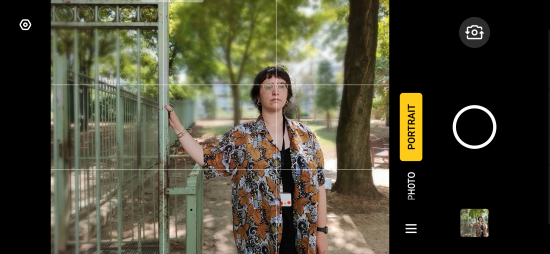













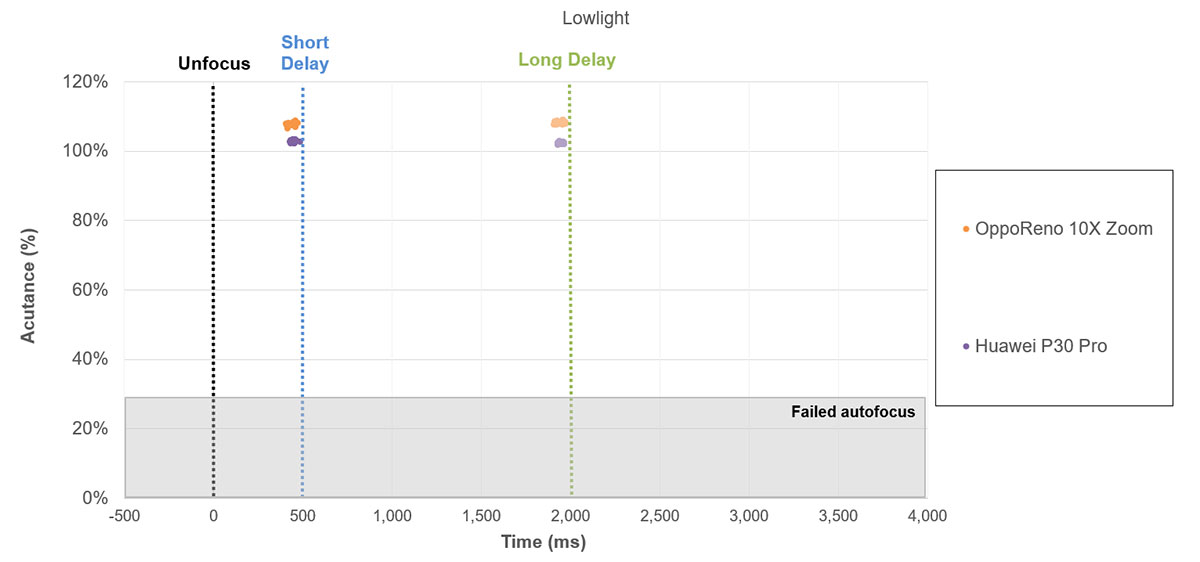


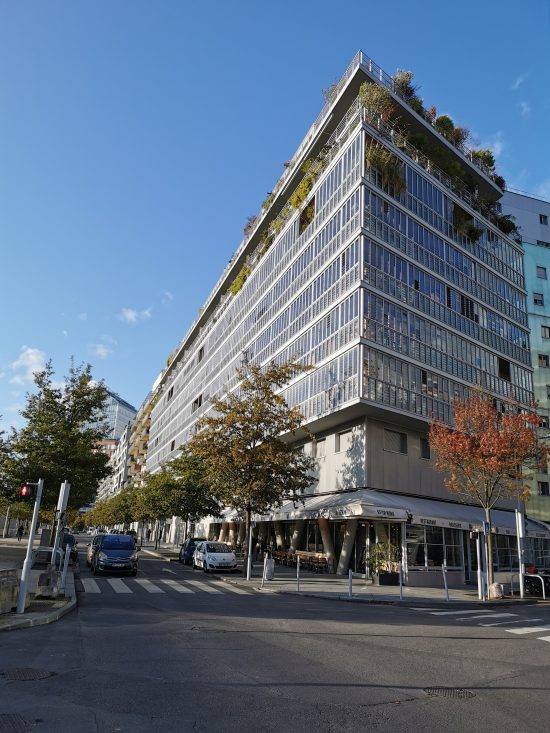








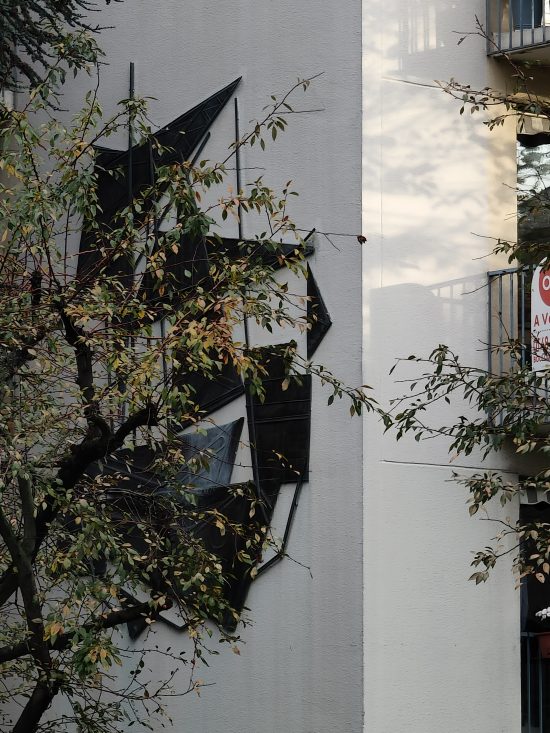













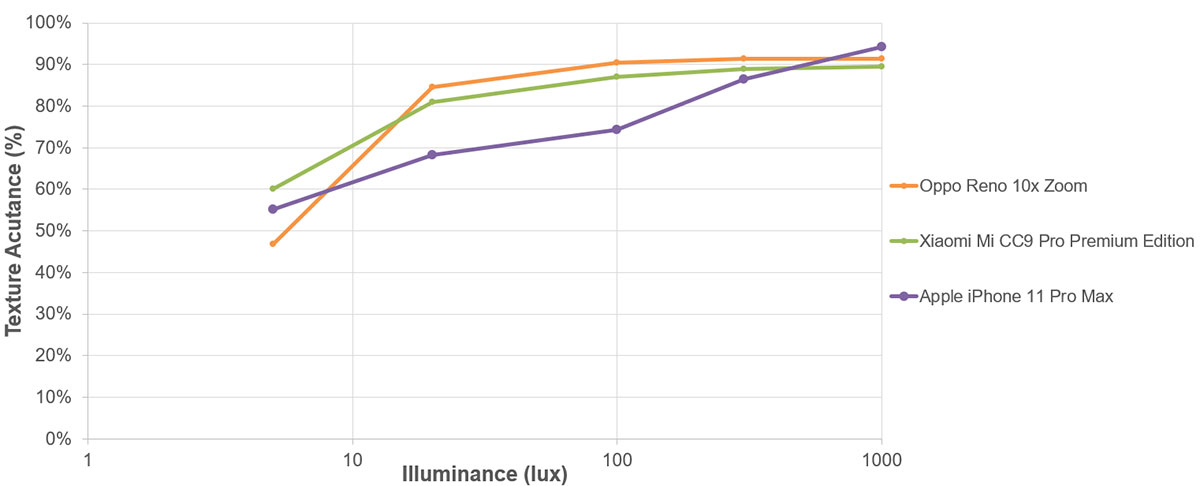
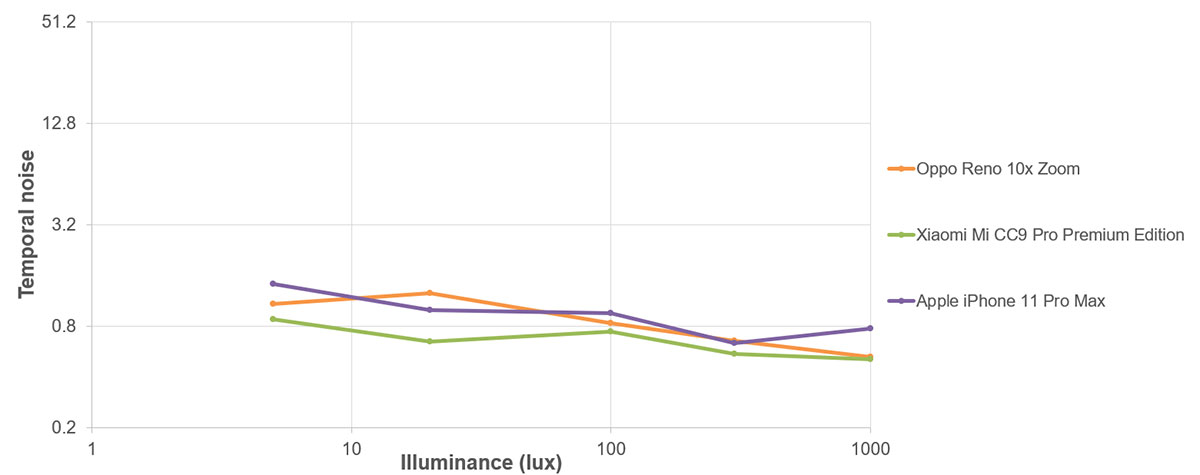


DXOMARK encourages its readers to share comments on the articles. To read or post comments, Disqus cookies are required. Change your Cookies Preferences and read more about our Comment Policy.